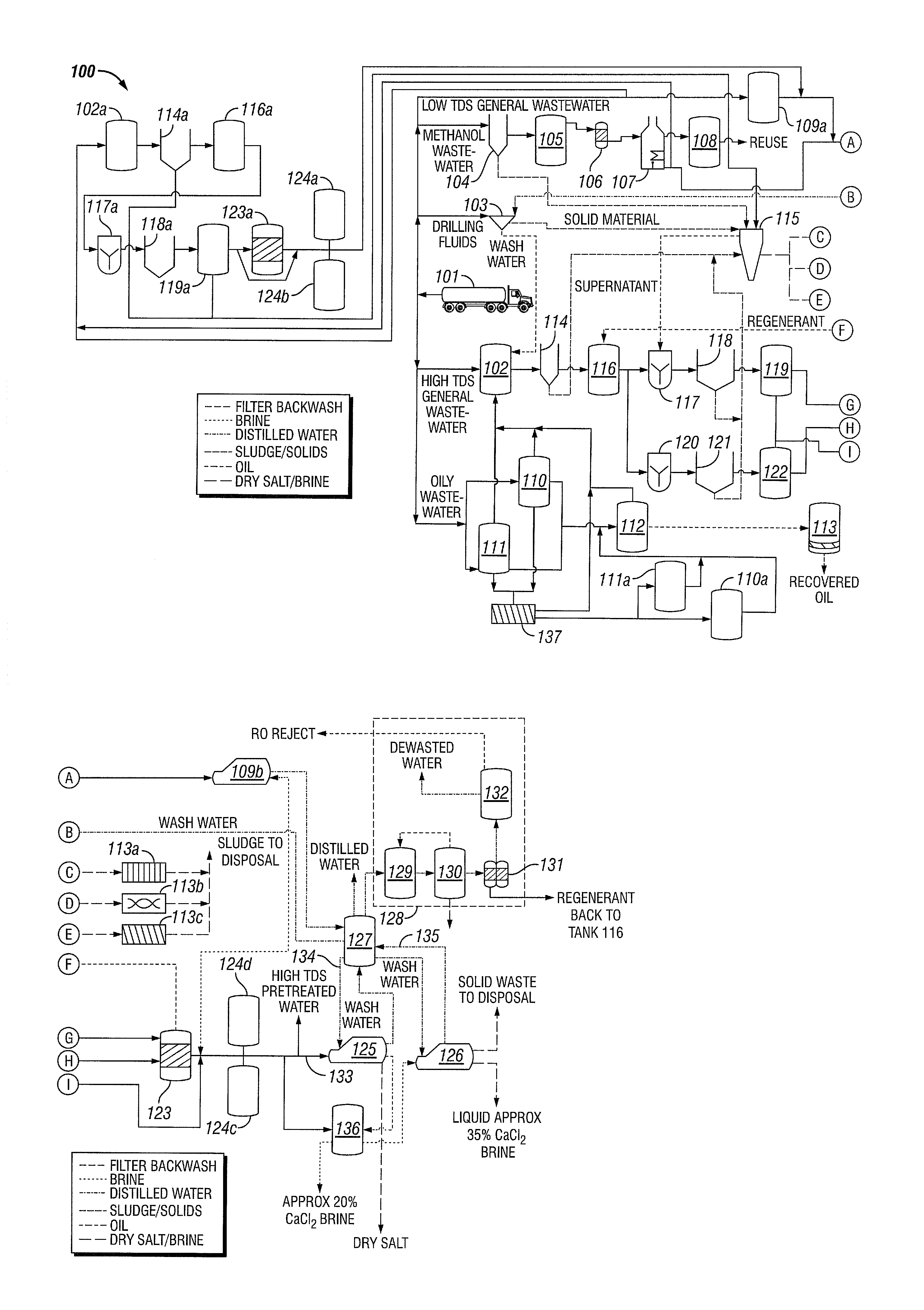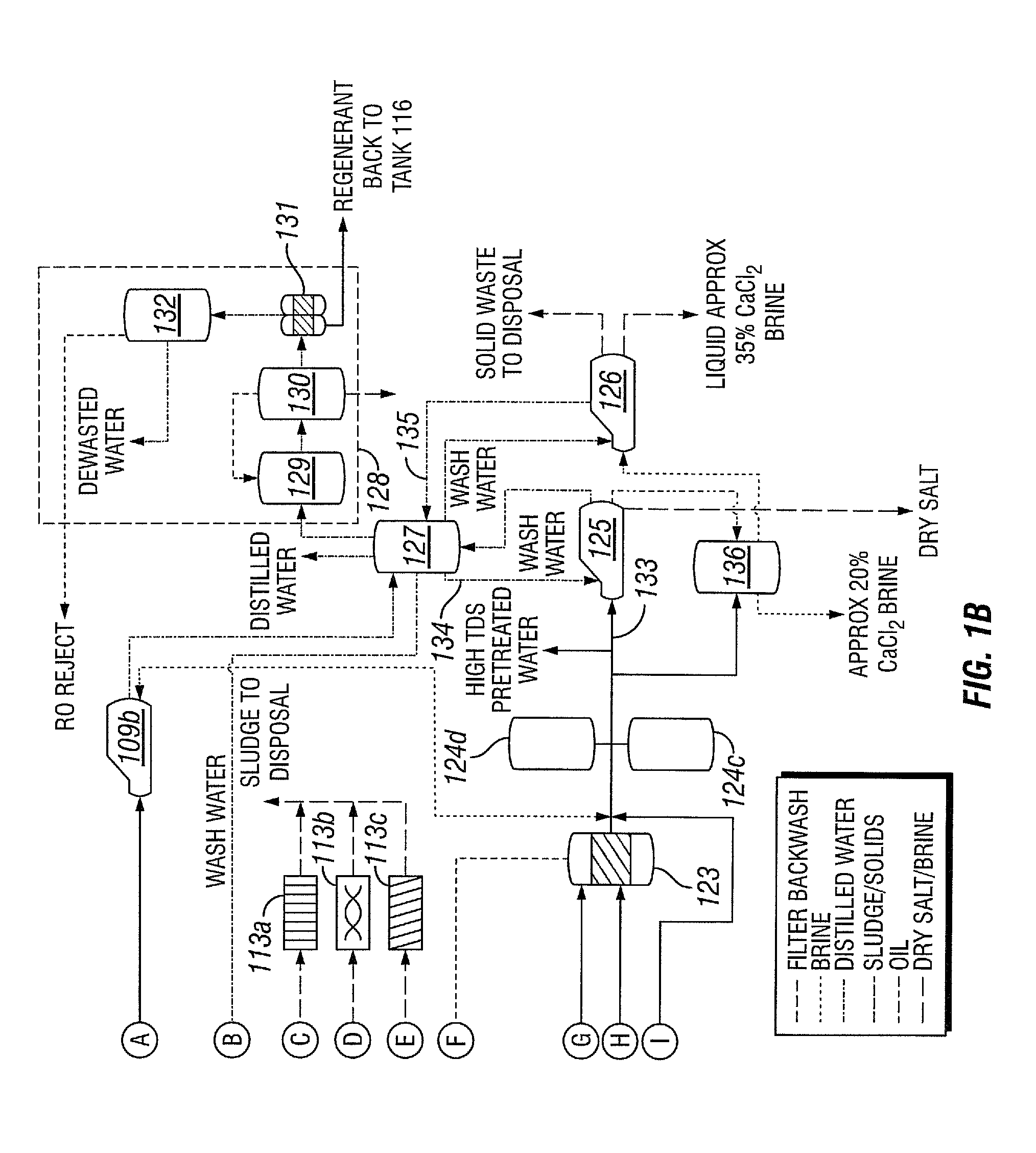Method and System for Treating Wastewater
- Summary
- Abstract
- Description
- Claims
- Application Information
AI Technical Summary
Benefits of technology
Problems solved by technology
Method used
Image
Examples
examples
[0141]An exemplary pilot-sized distilled water processing system was tested with an oil and gas liquid waste distillate. A schematic of the pilot sized plant 700 is illustrated in FIG. 7. As shown, the pilot plant included a 64 gallon pre-anoxic tank 710, a 210 gallon aeration tank 720, a 65 gallon post-anoxic tank 730, a 90 gallon MBR 740, and an ion exchange system 745. The total volume of the pilot system was about 420 gallons. Distilled water from tank 705 is pumped through strainer 707 (710. The pre-anoxic tank 710 includes a submersible pump 712 to mix the tank. Phosphorus, as phosphoric acid, is added from tank 714 to the pre-anoxic tank 710.
[0142]Treated water passed from the pre-anoxic tank 710 to the aeration tank 720. Air is added to the aeration tank 720 using aeration blower 722. Nitrates are recycled from the aeration tank to the pre-anoxic tank 710 by the nitrate recycle pump 724.
[0143]Treated water then passes to the post-anoxic tank 730. Carbon is added using a carb...
PUM
| Property | Measurement | Unit |
|---|---|---|
| Fraction | aaaaa | aaaaa |
| Fraction | aaaaa | aaaaa |
| Fraction | aaaaa | aaaaa |
Abstract
Description
Claims
Application Information
 Login to View More
Login to View More - Generate Ideas
- Intellectual Property
- Life Sciences
- Materials
- Tech Scout
- Unparalleled Data Quality
- Higher Quality Content
- 60% Fewer Hallucinations
Browse by: Latest US Patents, China's latest patents, Technical Efficacy Thesaurus, Application Domain, Technology Topic, Popular Technical Reports.
© 2025 PatSnap. All rights reserved.Legal|Privacy policy|Modern Slavery Act Transparency Statement|Sitemap|About US| Contact US: help@patsnap.com



